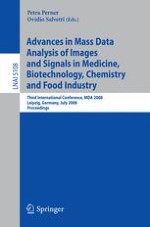The automatic analysis of signals and images together with the characterization and elaboration of their representation features is still a challenging activity in many relevant scientific and hi-tech fields such as medicine, biotechnology, and chemistry. Multidimensional and multisource signal processing can generate a number of information patterns which can be useful to increase the knowledge of several domains for solving complex problems. Furthermore, advanced signal and image manipulation allows relating specific application problems into pattern recognition problems, often implying also the development of KDD and other computational intelligence procedures. Nevertheless, the amount of data produced by sensors and equipments used in biomedicine, biotechnology and chemistry is usually quite huge and structured, thus strongly pushing the need of investigating advanced models and efficient computational algorithms for automating mass analysis procedures. Accordingly, signal and image understanding approaches able to generate automatically expected outputs become more and more essential, including novel conceptual approaches and system architectures. The purpose of this third edition of the International Conference on Mass Data Analysis of Signals and Images in Medicine, Biotechnology, Chemistry and Food Industry (MDA 2008; www.mda-signals.de) was to present the broad and growing scientific evidence linking mass data analysis with challenging problems in medicine, biotechnology and chemistry. Scientific and engineering experts convened at the workshop to present the current understanding of image and signal processing and interpretation methods useful for facing various medical and biological problems and exploring the applicability and effectiveness of advanced techniques as solutions.
